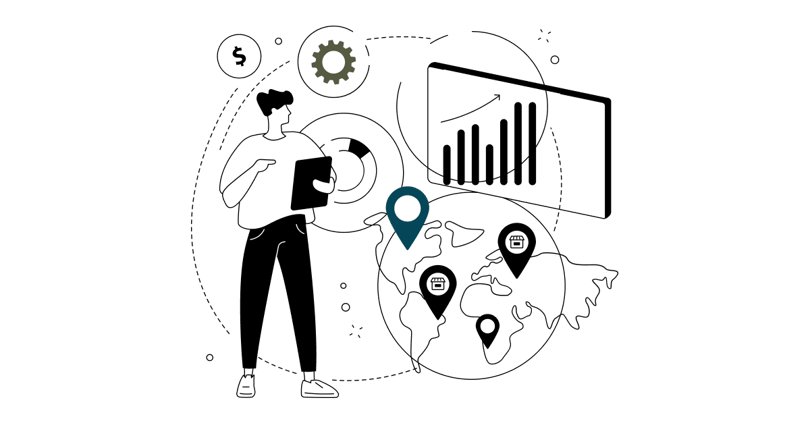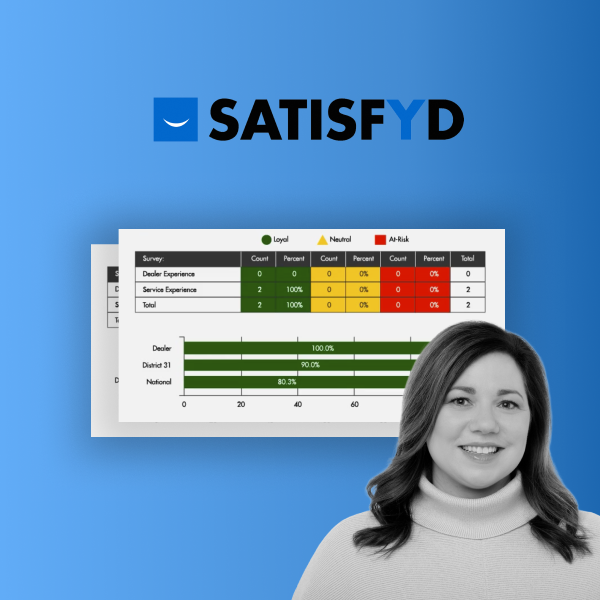As the market evolves and consumer needs change, many supply chain organizations are beginning to develop data-driven approaches to supply chain management through business intelligence (BI) and data analytics tools.
By investing in data analytics, these organizations gain greater visibility into daily operations and long-term performance, giving them the power to make informed decisions and identify new improvement opportunities.
The right supply chain data analytics solution can help you leverage your supply chain data more effectively, thanks to tools that enable:
- Multi-source data aggregation
- Automated reporting and data visualization
- Root cause analysis
- Performance monitoring
These features also have the potential to impact your supply chain in the long term, making them a worthwhile investment for your frontline teams, management staff, and executives.
Here are a few reasons to consider investing in a supply chain data analytics solution:
1. Enable Data-Driven Performance Management
To keep your supply chain running smoothly, you need a reliable way to measure progress toward Key Performance Indicators (KPIs) related to:
- Staff utilization
- Order picking accuracy
- Fulfillment rates
- Inventory utilization
- ROI & revenue
Your KPIs quite literally define success for your supply chain and your organization as a whole, which means your teams need a scalable way to monitor and measure against them.
A BI and supply chain data analytics solution allows your teams to monitor and record quantitative progress toward KPIs and other high-value goals by increasing visibility into system and team performance. With a comprehensive view of performance data, you can better relay progress to your stakeholders and implement improvements across your supply chain.
Consistently monitoring your supply chain KPIs helps keep your day-to-day operations running smoothly. It also helps your teams identify hidden bottlenecks and innovate improved processes over time. Plus, increased data visibility leads to proactive root cause analysis, so you can resolve errors and risks before they impact your team’s performance.
2. Promote Cross-Chain Collaboration
Whether your supply chain relies on a small set of trusted partners or a complex network of suppliers, shippers, and distributors, collaboration and alignment are essential for successful operations.

Not only do you need to establish processes that work well within your warehouse or fulfillment center, but you also need to ensure your efforts align with how your entire network operates.
Rather than asking network partners to simply adjust their processes to yours or buy into a strategy your teams developed in-house, work with them to create a mutually beneficial approach that accounts for historical data and identifies measurable KPIs.
A supply chain data analytics solution can help you record, measure, and analyze data across the entire supply chain. From there, you can use your insights to better understand and collaborate with your network partners. Not only does this improve visibility into your teams’ performance, but it also enables you to aggregate insights from external data sources to gain a better understanding of how your partners operate.
With a complete picture of everyone’s goals, constraints, and past performance, you’ll be well-equipped to approach your network with a data-driven strategy for alignment and process improvement. Plus, your solution gives you the power to track how well your new strategy performs and share those insights with your partners. This further improves cross-chain visibility and keeps everyone progressing towards the same set of goals.
3. Plan for the Future
Investing in supply chain data analytics allows you to process a seemingly endless stream of information accurately and efficiently. Your teams can use advanced BI and analytics tools to:
- Report against KPIs and goals
- Share progress with stakeholders
- Gain better visibility into team performance
And while capturing and sharing these insights on a daily basis is critical, they also impact your organization’s long-term success. The more data you have at your disposal, the better equipped you are to make decisions that will improve performance over time. Supply chain data analytics enables your teams to dive deep into customer and performance data, identify trends and patterns, and use them to forecast more accurately.
For example, if you discover that employees spend 25% of their time hunting down inventory on poorly organized shelves, it may be time to upgrade your WMS or reimagine the order-picking process. On the customer side, you can use historical data to identify and invest in top-performing products rather than creating new promotions at random or taking your best guess at your customers’ preferences.
When you base your business decisions on data rather than personal preferences or even a ‘gut feeling’ about the best path forward, you, your stakeholders, and your customers reap the benefits.
Not only will you be able to meet customer needs proactively, but you’ll lower unnecessary expenses and learn how to operate efficiently without compromising accuracy or quality of service. What’s more, a proactive, data-driven approach to supply chain management helps you spot and resolve potential risks before they impact performance.

Data analytics is an integral part of developing a data-driven supply chain. However, the insights you draw from your data are only as valuable as the solution you use to extract them. And if your new analytics platform is clunky, hard to use, or impossible to customize, you won’t see a positive ROI or high adoption rates in your organization.
At TARGIT, we develop BI and analytics solutions around our customers, combining a scalable backend infrastructure with a user-friendly front end that makes it easy to promote data adoption at every level of your supply chain.
Ready to learn how TARGIT can help you unlock the full power of your supply chain data? Request your personalized demo today.




